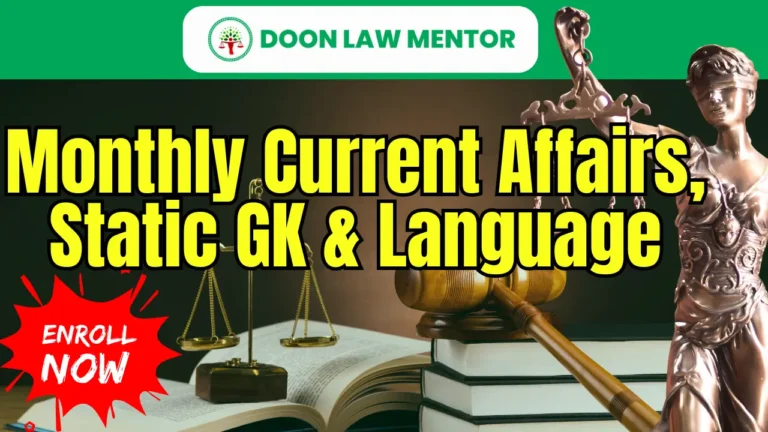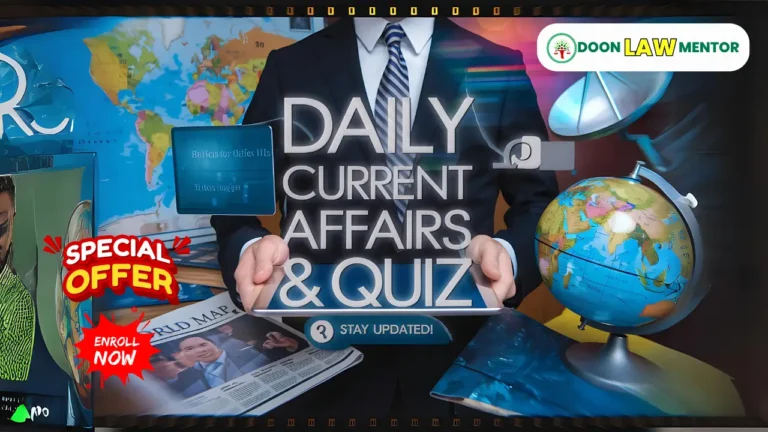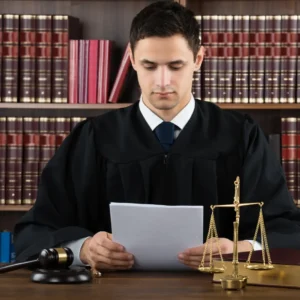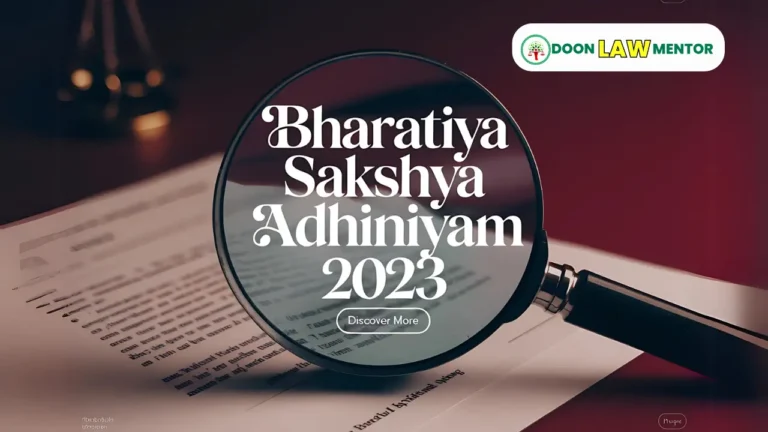What are the Powers of the President of India? Doon Law Mentor explores the constitutional, executive, legislative, and judicial roles, analyzing key cases and limitations. A must-read for law students studying India’s constitutional framework.
Table of Contents
Introduction
The President of India stands as the ceremonial head of state, embodying the unity and sovereignty of the nation. Under the Indian Constitution, the Powers of the President are meticulously defined, balancing authority with democratic accountability in a parliamentary system. For lawyers and law students, understanding the Powers of the President is essential to grasp how India’s executive functions within a framework where the Prime Minister and Council of Ministers hold significant sway. This educational article, crafted by Doon Law Mentor, provides a comprehensive analysis of the Powers of the President , covering executive, legislative, judicial, and emergency roles, their limitations, landmark judicial interpretations, and contemporary relevance, using clear language to ensure accessibility and depth for legal studies.
Constitutional Framework of the President’s Role
The Indian Constitution, enacted on January 26, 1950, establishes the President as the head of state under Article 52, with the Powers of the President detailed across various provisions. Elected indirectly by an electoral college (Article 54), the President serves a five-year term (Article 56) and acts as a symbol of national unity. The Powers of the President are broadly categorized into executive, legislative, judicial, and emergency powers, but these are exercised on the advice of the Council of Ministers (Article 74), led by the Prime Minister, except in specific discretionary scenarios.
The Powers of the President are not absolute; they are circumscribed by constitutional checks to align with India’s parliamentary democracy, where real executive authority vests in the Council of Ministers. The Preamble’s emphasis on a sovereign, democratic republic underscores that the Powers of the President serve to uphold constitutional values, not to dominate governance.
Read More: Kelsen’s Grundnorm in India: A Legal Philosophy Analysis for 2025
Executive Powers of the President
The Powers of the President in the executive domain are outlined in Article 53, vesting the executive power of the Union in the President, exercised either directly or through subordinate officers. Key executive Powers of the President include:
- Appointment Authority (Articles 75, 124, 148):
- Appoints the Prime Minister, typically the leader of the majority party in the Lok Sabha, and other ministers on the Prime Minister’s advice.
- Appoints Supreme Court and High Court judges, the Attorney General, the Comptroller and Auditor General, and Election Commissioners.
- For example, in 2024, President Droupadi Murmu appointed over 20 judges to High Courts, reinforcing judicial independence.
- Administration of Union Territories (Article 239): Oversees the administration of Union Territories through appointed administrators.
- Foreign Affairs: Represents India internationally, accredits ambassadors, and ratifies treaties (Article 53), though on ministerial advice.
- Discretionary Powers: In rare cases, the President may exercise discretion, such as choosing a Prime Minister during a hung Parliament (e.g., 1996, when President Shankar Dayal Sharma invited Atal Bihari Vajpayee to form the government).
The Powers of the President in executive matters are largely formal, as Article 74 mandates acting on ministerial advice, except in discretionary situations like government formation.
Legislative Powers of the President
The Powers of the President in the legislative sphere are significant, ensuring checks and balances within Parliament:
- Summoning and Proroguing Parliament (Article 85): The President summons the Lok Sabha and Rajya Sabha for sessions and may prorogue them. For instance, President Murmu summoned the 2025 Budget Session.
- Dissolving the Lok Sabha: The President can dissolve the lower house, triggering general elections, as seen in 2019 under President Ram Nath Kovind.
- Assent to Bills (Article 111): The Powers of the President include giving assent to bills passed by Parliament, withholding assent (veto), or returning non-money bills for reconsideration. The President’s veto powers include:
- Absolute Veto: Refusing assent, rarely used (e.g., President R. Venkataraman withheld assent to the Indian Post Office Bill, 1986).
- Suspensive Veto: Returning a bill for reconsideration, after which assent is mandatory if re-passed.
- Pocket Veto: Delaying action indefinitely, as in President Zail Singh’s handling of the Postal Bill, 1986.
- Ordinance-Making Power (Article 123): The President can promulgate ordinances when Parliament is not in session, subject to later parliamentary approval. In 2023, an ordinance was issued to amend election laws, showcasing the Powers of the President.
- Address to Parliament (Article 87): Delivers the opening address to joint sessions, outlining government policy.
These legislative Powers of the President ensure parliamentary oversight but are exercised on ministerial advice, limiting independent action.
Read More: Udaipur Files Legal Issue: Delhi High Court Stay and Supreme Court Updates 2025
Judicial Powers of the President
The Powers of the President extend to the judiciary, primarily in clemency and appointments:
- Pardoning Power (Article 72): The President can grant pardons, reprieves, respites, or remissions of punishment for offenses under Union laws, including those in the Bharatiya Nyaya Sanhita, 2023 (BNS). For example:
- Pardon: Complete forgiveness, as in the 2021 commutation of a death sentence by President Kovind.
- Commutation: Reducing a sentence’s severity, e.g., life imprisonment to a shorter term.
- Remission: Reducing the sentence duration without altering its nature.
- Judicial Appointments: Appoints Supreme Court and High Court judges, ensuring judicial integrity, as seen in the 2024 appointments under the BNSS framework.
- Consultation in Judicial Matters: Advised by the Supreme Court in cases like the Advisory Opinion on Special Courts Bill (1978).
The Powers of the President in judicial matters are significant but guided by the Council of Ministers and judicial collegium recommendations, ensuring checks on discretionary use.
Emergency Powers of the President
The Powers of the President during emergencies are among the most consequential, outlined in Part XVIII of the Constitution:
- National Emergency (Article 352): Declared during war, external aggression, or armed rebellion. The President can suspend fundamental rights (except Articles 20 and 21) and centralize power. The 1975 Emergency under President Fakhruddin Ali Ahmed remains a controversial example.
- State Emergency (Article 356): Imposed when a state’s constitutional machinery fails, allowing the President to assume state functions. The S.R. Bommai v. Union of India (1994) case limited its misuse, protecting federalism.
- Financial Emergency (Article 360): Declared during economic crises, enabling Union control over state finances. Never used as of 2025.
These emergency Powers of the President are exercised on Cabinet advice, with parliamentary approval required within two months, ensuring democratic accountability.
Read More: Election Commission of India: An In-Depth Legal Guide for Law Students
Discretionary Powers of the President
While the Powers of the President are generally exercised on ministerial advice, certain discretionary powers exist:
- Government Formation: In a hung Parliament, the President may choose the Prime Minister, as seen in 1998 when President K.R. Narayanan invited Vajpayee over other claimants.
- Vetoing Bills: The President can withhold assent or return bills, exercising limited discretion (e.g., President A.P.J. Abdul Kalam returning the Office of Profit Bill, 2006).
- Dissolving Lok Sabha: In rare cases, the President may assess government stability before dissolution, as in 1979 under President Neelam Sanjiva Reddy.
These discretionary Powers of the President are exceptional, as Article 74(1), post-44th Amendment (1978), mandates acting on ministerial advice, reinforced by Shamsher Singh v. State of Punjab (1974).
Landmark Case Studies on the Powers of the President
- Shamsher Singh v. State of Punjab (1974):
- Context: Clarified that the President acts as a constitutional head, bound by ministerial advice.
- Impact on Powers of the President: Limited discretionary authority, aligning with parliamentary democracy.
- S.R. Bommai v. Union of India (1994):
- Context: Restricted misuse of Article 356, requiring judicial review of state emergencies.
- Impact on Powers of the President: Ensured emergency powers are exercised judiciously, protecting federalism.
- Nabam Rebia v. Deputy Speaker (2016):
- Context: Addressed the Governor’s role but clarified the President’s limited discretion under Article 356.
- Impact on Powers of the President: Reinforced checks on emergency powers.
- Union of India v. Gopal Singh (1980):
- Context: Upheld the President’s pardoning power under Article 72.
- Impact on Powers of the President: Affirmed clemency as a constitutional safeguard, subject to judicial review.
These cases illustrate how the judiciary shapes the Powers of the President, ensuring they align with constitutional principles.
Limitations on the Powers of the President
The Powers of the President are subject to significant checks:
- Ministerial Advice (Article 74): The President must act on the advice of the Council of Ministers, except in rare discretionary cases.
- Judicial Review: Presidential actions, especially emergency declarations, are subject to scrutiny, as in S.R. Bommai.
- Parliamentary Oversight: Ordinances and emergency proclamations require parliamentary approval within stipulated periods.
- Basic Structure Doctrine: Established in Kesavananda Bharati (1973), it limits any actions undermining constitutional essentials.
- Federal Structure: State autonomy restricts the Powers of the President in areas like state emergencies.
These limitations ensure the Powers of the President do not override democratic principles, maintaining the balance of power.
Contemporary Relevance and Challenges
The Powers of the President remain vital in India’s evolving legal landscape:
- BNS and BNSS: The Bharatiya Nyaya Sanhita, 2023 (BNS) and Bharatiya Nagarik Suraksha Sanhita, 2023 (BNSS) enhance the President’s pardoning powers for offenses under Union laws, ensuring justice aligns with modern values.
- Political Polarization: With 630 communal incidents in 2024 (NCRB), the President’s role in upholding constitutional fraternity through ordinance-making or clemency is critical.
- Judicial Delays: With 4.8 crore pending cases in 2025, the Powers of the President in appointing judges are crucial for judicial efficiency.
- Digital Governance: The President’s address to Parliament increasingly emphasizes digital policies, reflecting the Powers of the President in shaping national discourse.
Challenges include balancing discretion with ministerial advice and addressing criticisms of ceremonial roles in a dynamic democracy.
Role of Legal Professionals
Lawyers and law students can strengthen the application of the Powers of the President:
- Advocacy: Challenge misuse of emergency powers through PILs, as in S.R. Bommai.
- Public Education: Inform citizens about the Powers of the President, fostering constitutional awareness.
- Policy Reform: Advocate for clearer guidelines on discretionary powers to prevent ambiguity.
- Judicial Support: Assist courts in reviewing presidential actions, ensuring alignment with the Constitution.
Table: Key Powers of the President
| Category | Power | Constitutional Basis | Example |
|---|---|---|---|
| Executive | Appointing Prime Minister | Article 75 | Appointing Narendra Modi, 2014 |
| Legislative | Assent to bills | Article 111 | Returning Office of Profit Bill, 2006 |
| Judicial | Pardoning power | Article 72 | Commuting death sentence, 2021 |
| Emergency | Declaring national emergency | Article 352 | Emergency of 1975 |
| Discretionary | Choosing Prime Minister in hung Parliament | Article 75 | Inviting Vajpayee, 1998 |
This table, by Doon Law Mentor, summarizes the Powers of the President.
Conclusion: Balancing Power and Responsibility
The Powers of the President under the Indian Constitution embody a delicate balance between ceremonial duties and constitutional responsibilities. From appointing key officials to granting pardons and declaring emergencies, the Powers of the President ensure national unity and governance, guided by ministerial advice and judicial oversight. Landmark cases like Shamsher Singh and S.R. Bommai reinforce these powers’ alignment with democratic principles. As India navigates challenges like polarization and judicial delays, legal professionals must uphold the Powers of the President to strengthen constitutional democracy. Visit Doon Law Mentor at doonlawmentor.com to explore India’s constitutional framework further!
Key Takeaways:
- The Powers of the President include executive, legislative, judicial, and emergency roles under Articles 53, 111, 72, and 352.
- Article 74 mandates acting on ministerial advice, limiting discretionary Powers of the President.
- Cases like S.R. Bommai ensure the Powers of the President align with federalism and justice.
- The BNS and BNSS enhance the President’s clemency powers.
- Lawyers must advocate for the responsible use of the Powers of the President.
FAQs
What are the Powers of the President under the Indian Constitution?
The Powers of the President include appointing officials, assenting to bills, granting pardons, and declaring emergencies, guided by Article 74.
Can the President act independently?
The Powers of the President are generally exercised on ministerial advice, except in discretionary cases like government formation.
What is the President’s role in emergencies?
The Powers of the President include declaring national, state, or financial emergencies under Articles 352, 356, and 360.
How does the judiciary limit the Powers of the President?
Cases like S.R. Bommai subject the Powers of the President to judicial review, ensuring constitutional compliance.
Why study the Powers of the President?
Understanding the Powers of the President equips lawyers to analyze India’s executive framework and constitutional balance.
#PowersOfThePresident #IndianConstitution #ConstitutionalLaw #DoonLawMentor









